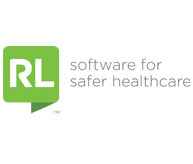Resource:
Building a Just Culture: Wellspan Health
Learn how Wellspan Health implemented risk management software to help promote system-wide just culture.
THE CHALLENGE: Establish and entrench just culture at WellSpan HealthWellSpan
The majority of medical errors are the result of poorly designed systems, and sub-optimal processes and working conditions—not the “bad” behavior of staff. Just culture is an approach that recognizes this reality and works to create a supportive system of shared accountability. There are two basic premises of this system: Management is accountable for good system design, and staff members are accountable for the quality of their choices within the system. For example, management is responsible for the locations of hand-gel stations, but hospital staff are responsible for cleaning their hands properly, according to hand hygiene guidelines.WellSpan gained approval to launch just culture as a strategic initiative in its facilities in 2009. Its patient safety team conducted full-day training for more than 700 managers over three months, followed by half-day training for physician leaders. However, they needed a tool to document just culture interventions to ensure that problems were being identified—and fixed. They decided to modify their existing risk-management system, Risk by RL Solutions, to capture just culture documentation as part of an incident report.
THE SOLUTION: WellSpan Health modifies RL Solutions’ risk-management software to promote just culture
Gary Merica, a patient safety officer at WellSpan Health, modified the Resolution/Outcome screen (the final screen of each incident report) and added a field called “Just Culture Documentation.” When a manager clicks on this field, it opens a dialog box with several checkbox options. Managers must indicate the extent to which system design and staff behavior contributed to the incident, and describe their follow-up actions (i.e., Did the manager console, coach or discipline the employee, or was no action taken?). In addition to the checkboxes, managers are asked to provide outcome notes and follow-up recommendations to support their findings. While there was some work involved in configuring the Risk system to accommodate just culture documentation, RL Solutions’ software is very customizable—adding fields like this is easy. In this case, Gary used the tools and training that RL Solutions provides to all of its clients to rename unused fields on the standard Risk forms.
THE RESULT: Increased just culture documentation in Risk identifies system flaws.
Just culture documentation via Risk supports mid-level management in identifying systems, processes and working conditions that contributed to errors as described by the Institute of Medicine (IOM). System-failure documentation in Risk assists in documenting the existence of a system problem, identifying risks, understanding the extent of the problems, alerting other stakeholders to system failures and determining the appropriate course of action. For example, just culture documentation through Risk proved critical in identifying a major flaw in WellSpan’s medication system that appeared routine at first. Through the data collected, WellSpan was able to significantly minimize the potential reoccurrence of similar process-related events.
The patient safety team monitored adoption of the just culture model by examining incident reports that had just culture documentation. Since manager training, almost 30% of reports have documentation attached (up from just 6.5% prior to training). However, a higher quantity of reports is not necessarily indicative of a higher quality of reports. The team also reviews the incident reports to ensure that the follow-up action selected is appropriate given the type of error (e.g., for an incident caused by human error, the manager should console the employee). If they don’t match, a team member calls the person who filled out the incident report to deliver just-in-time training.
Reporting system failures through Risk provides a summary overview of particular systems or processes in need of additional scrutiny. Documenting just culture interventions over time helps to show trends and demonstrate historical success, such as catching a pattern of minor system failures before it escalates to a major failure. This is extremely helpful in prioritizing quality-improvement efforts.
Finally, managers review a monthly summary report of medication errors that include just culture documentation. This report is built using Risk’s Report Producer and helps the team look for patterns to identify potential system failures, correlations and trends. Once these events are identified, specific departments use this information in their monthly staff meetings to review and identify outstanding systems issues that have not been remediated. They also discuss the depth and breadth of the issues and plan quality-improvement projects accordingly.
Download the full case study to learn more.

